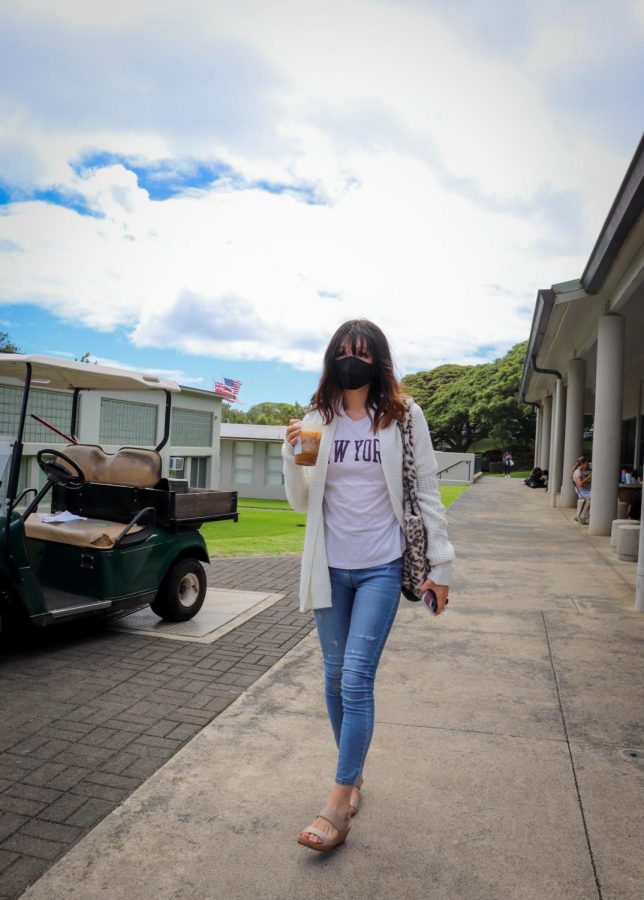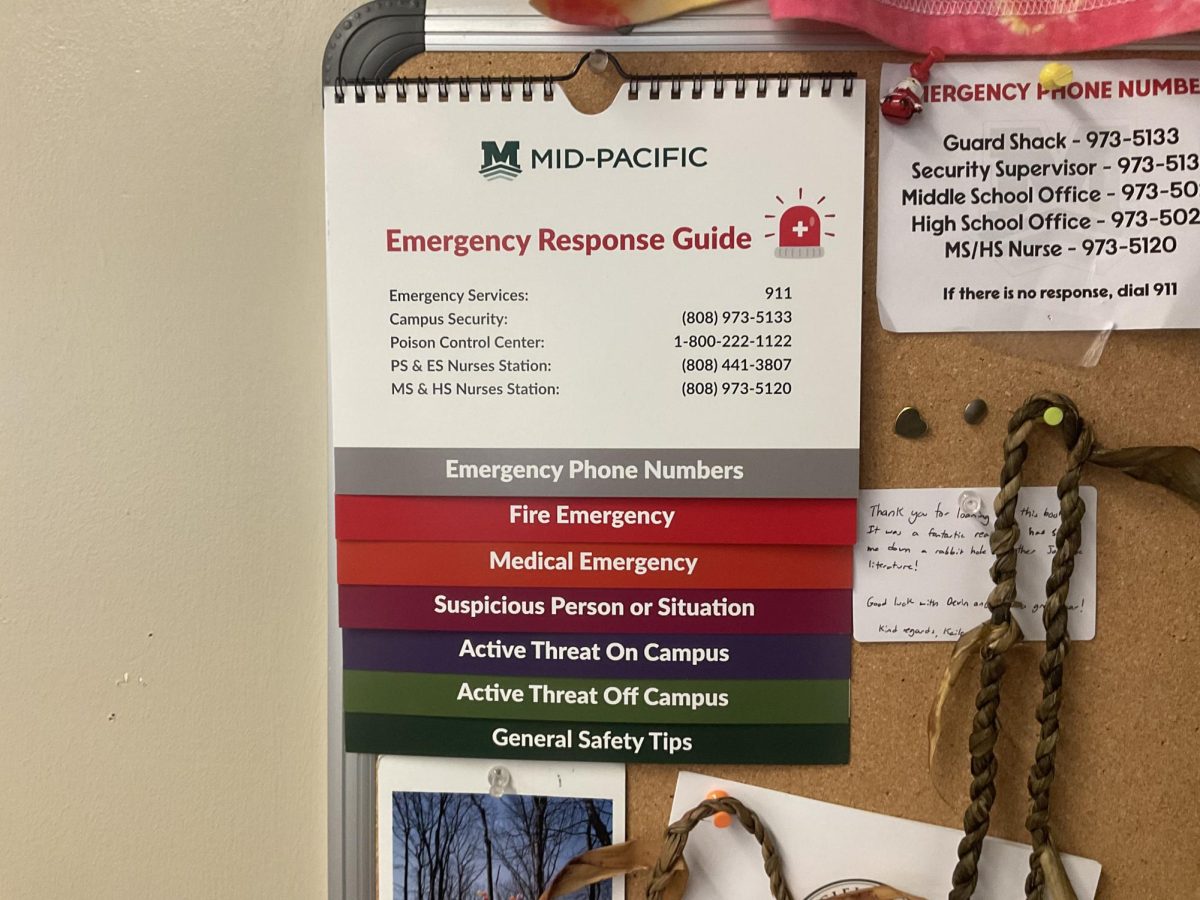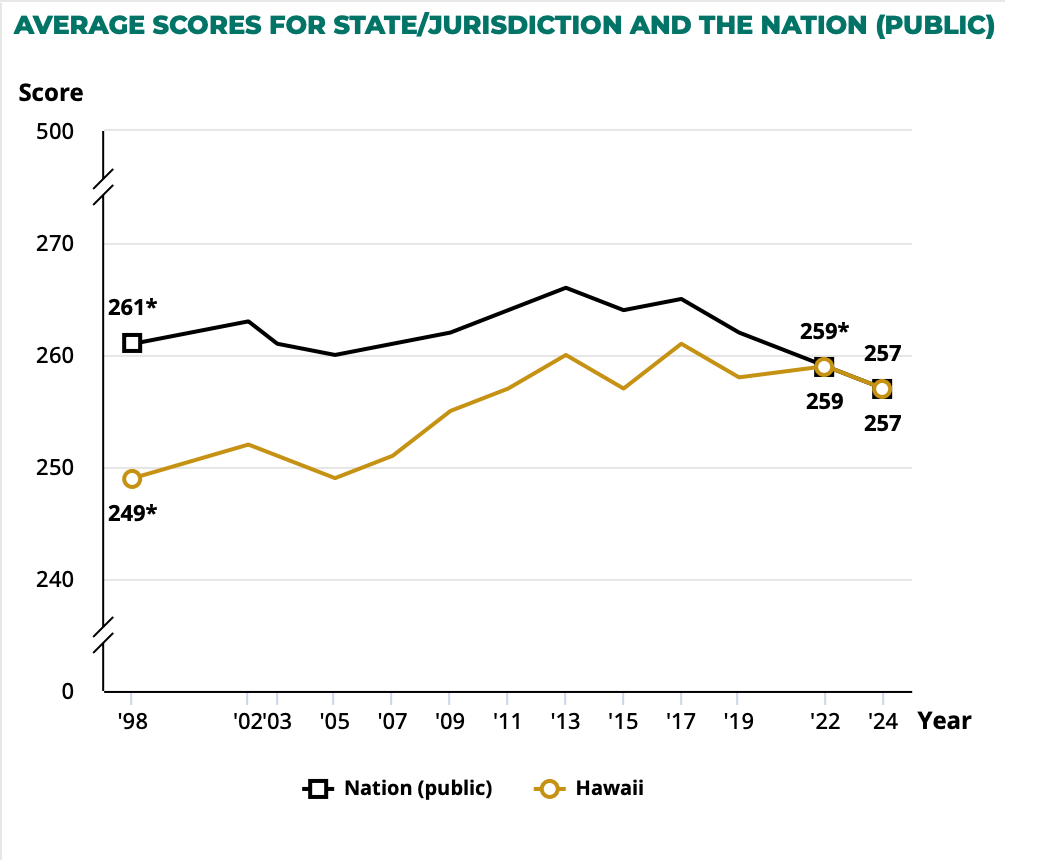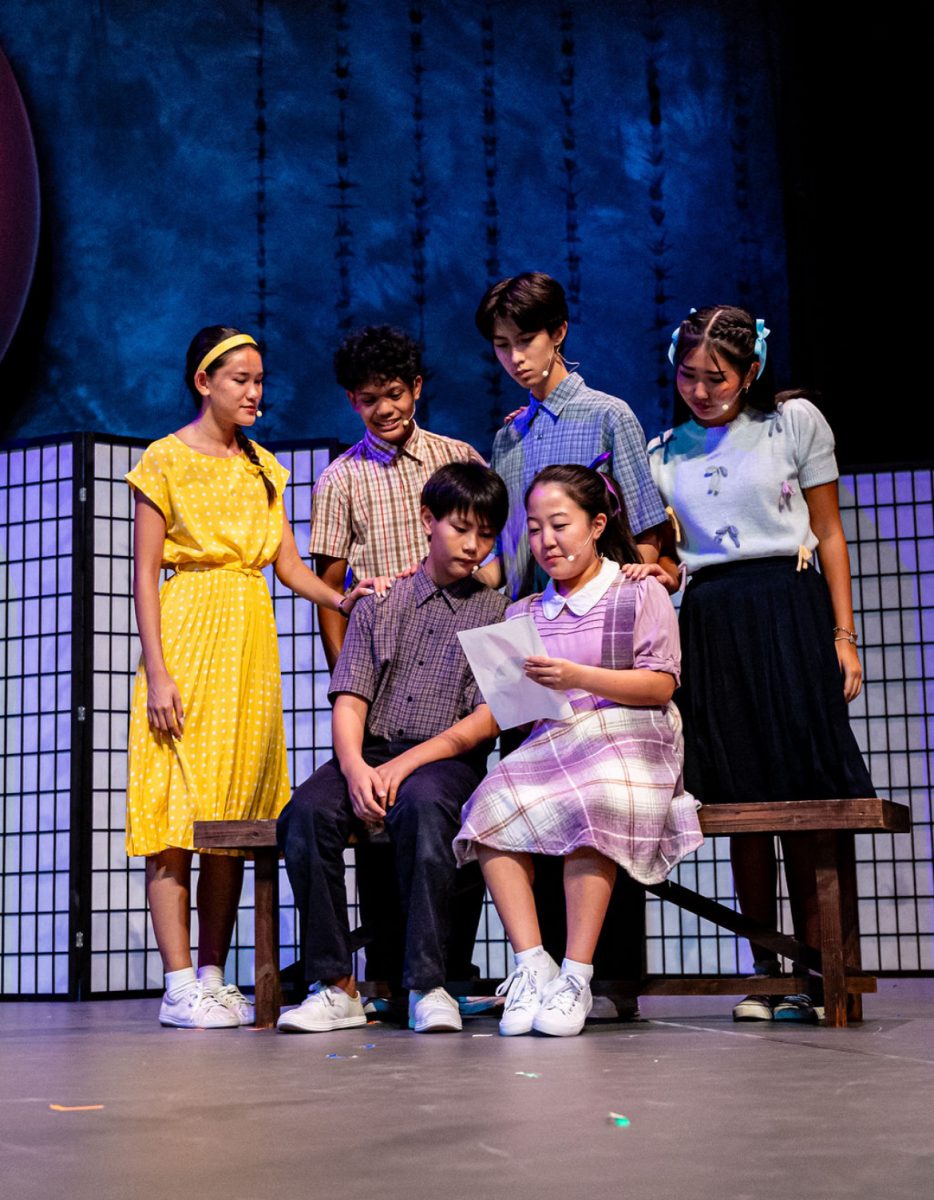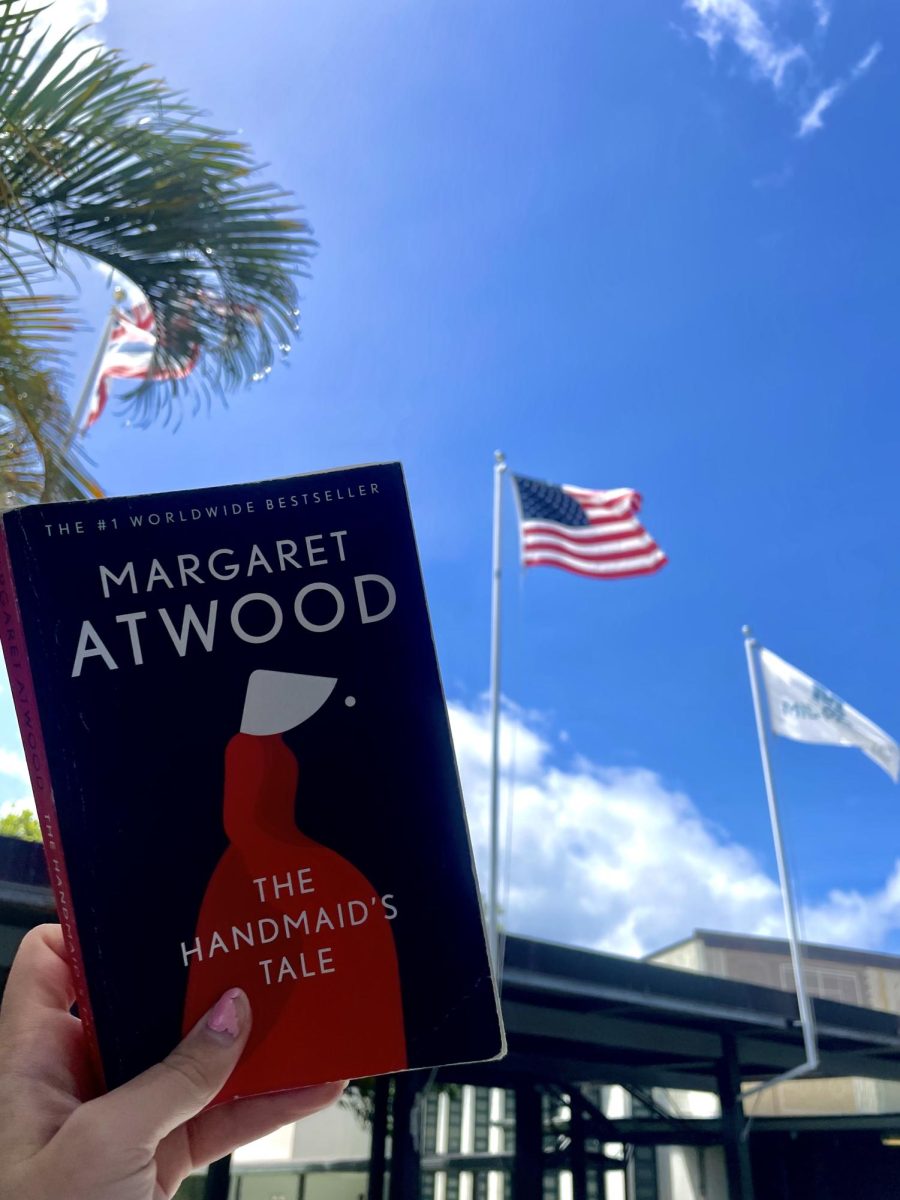The Problem with the Dresscode
Laulea Haga walking to her next class wear a shirt, jacket, jeans, and heels.
April 17, 2023
The dress code at Mid-Pacific has gradually changed to be more lenient throughout the years, yet students are still not satisfied.
Students, a large number of females in high school at Mid-Pacific are widely affected by our school’s dress code.
According to the dress code manual, it is mandatory to wear tops that completely cover the torso and shoulders whereas crop tops and tank tops are not allowed. In addition to the tops, the bottoms must be at least mid-thigh length.
“I think the dress code should just be more lenient. They’re all about individuals and us expressing ourselves. I think there’s a lot of people at our school that are into fashion, and we aren’t allowed to wear a lot of things. Fashion is a way of expressing ourselves and the dress code kind of stops that,” said senior Mylah Williams.
Williams believes that with the clothes and the fashion that’s popular now, it’s hard to buy clothes that apply to those rules. She does not like the midriff rule and wishes it could be to a certain level on what you should be able to wear.
“I like that we don’t have a uniform. I know in middle school we would have to wear the polo shirt, and some schools like Sacred Hearts have the full on formal uniform so I like that we can kind of choose our own outfits. Although, I don’t like that most of the dress code only applies to females,” junior Skye Choi said.
Choi explains how she doesn’t like having to worry about getting disciplined for what’s comfortable for her and wearing what she wants to wear.
“The school dress code definitely has affected a lot of my time in the mornings. My time in the mornings is spent putting on something and then being worried about my stomach showing, or not being able to wear any tank tops or shorts,” said Choi.
As the dress code makes choosing what to wear in the morning an “inconvenience” according to Choi and other females, males can have a different standpoint.
Not everyone looks the same and has the same body type. Dress-coding females and certain people because they may have more of a chest than others is unfair. For example, if there were two different girls wearing the same top, it is more likely that the one who has a bigger chest is the only one to get dress-coded.
“Hearing from friends too, the dress code is more against the way girls dress, that’s my only complaint. I feel like it’s a little unfair, and as a school I think we should try to be fair to every student here,” said senior Curren Yen.
Typically, males wear shirts that are looser and cover their whole stomach paired with shorts or pants. While some females tend to wear crop tops or tank tops.
“In my opinion, the way that most males dress, I don’t think we’re going to be wearing really short shorts or showing midriffs, so I don’t think that I personally have a problem with the dress code or to be worried about getting dress-coded,” said Yen.
The consequence of being out of the dress code has been changed from receiving demerits to no demerits by the administration faculty.
“We don’t want to talk about punishments, we want to talk about changing behavior which comes from conversation. The “consequences” for being out of dress code would have to be conversations with students, sometimes having to talk to their dean, and having conversations with families to get their support,” said freshman dean, Erin Regua.
Dean Regua thinks that change will come from conversations, building trust, and understanding as opposed to just getting demerits as it just puts a number on behavior.
“There’s a lot more options unavailable for females when limiting the dress code which is why I think it feels like it’s targeting them and why they tend to get dress-coded more frequently. Women have a much larger variety in what they can choose to wear and fashion is a big thing. In my opinion, guys’ dress has not varied much,” said Math teacher, Jason McEnerey.
Based on the time and fashion, it is hard for girls to wear their normal attire to school. “I would say it is easier for males students to select items that are within fashion that fit the dress code than it is for females. Even just looking on Amazon or walking in stores, it is hard because it is societal norms, and I do think there is a disconnect between “boys” attire and “girls” attire,” said Regua.
“Even though we don’t have demerits anymore, it still makes me anxious about going to school, afraid that someone will dresscode me for the smallest thing. They should be more worried about grades than what I’m wearing, because people really don’t care about that stuff outside of school and they’re only preparing us to think that this will happen in the real world,” said Willams.
Not only do tops and bottoms apply to the dress code, but hats and footwear is also a factor. Hats are not allowed indoors, but they are outdoors. The footwear policy states that we must wear shoes and it has to cover our entire foot.
“I think the dress code is more than fair because I came from Kamehameha, a school with uniforms. I’ve always had uniforms which are very limiting. When we didn’t have uniforms for one year, it was a lot more difficult to wear clothing because it was very strict. So I don’t think this dress code is strict, although I do feel like it is skewed,” said Science teacher, Sarah Vasconcellos.
The high school dress code also states that pajamas are prohibited on school grounds. Students are allowed to wear sweatpants and leggings.
“In terms of the actual nitty gritty of why sweatpants and no PJ pants, I think that pajama pants is subjective. I don’t know if it’s the matter of the design or the fit. But the dress code in my opinion is to teach people about time and place, and the appropriateness when you’re in certain spaces where there are certain expectations,” said Regua.
The school’s dress code could be more specific in some parts, in particular the PJ pants.
Additionally, it may be hard not to direct the dress code to women because common attire for women largely differs from men and the way they dress.
“I think the midriff length should be able to be an inch above your belly button at least. I really don’t think shorts should have a length, obviously your whole butt can’t be hanging out, but there’s regular shorts that you can wear that are fine. If you can wear leggings, I don’t really see the problem with being able to wear shorts,” said Williams.
Student involvement and input may help the students to appreciate the set of rules that are allowed.
“The dress code seems outdated in some parts, and what we have given the students is never good enough,” said McEnerey.
A student voice would be helpful to look at the dress code to express their opinions and if they believe the dress code may be unfair to certain students.
“Not all clothes look the same on everyone. I don’t really like it, I think it’s really hard to follow the rules of it. They’re so worried about certain things when it really shouldn’t be affecting our education,” said Williams.
This issue has loosened a fair amount from before, but the school should keep working on issues like this as the dress code affects the entire study body.
“I understand why they can’t have completely free dress, but if it were up to me, I wouldn’t have a dress code. I can see when a student is dressed completely inappropriately and most people wouldn’t get to the point. To me, a crop top and shorts is not inappropriate, but it’s up to perspective,” said Choi.

